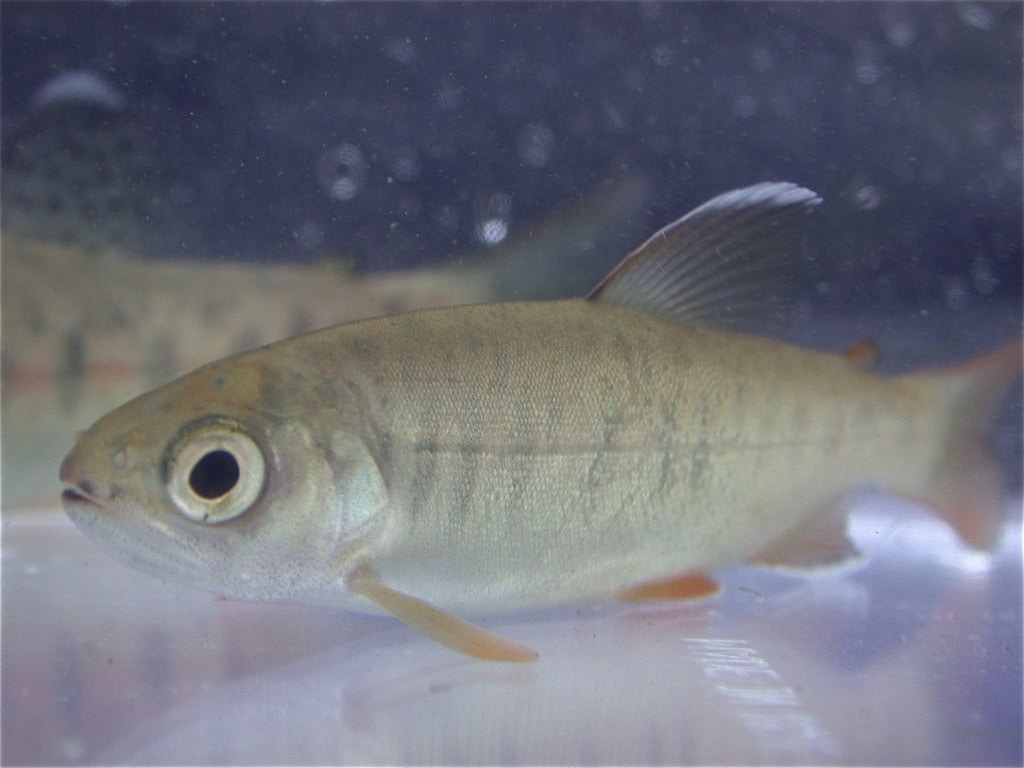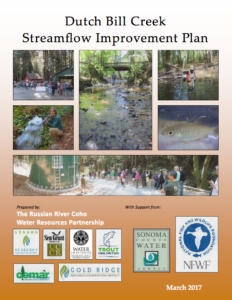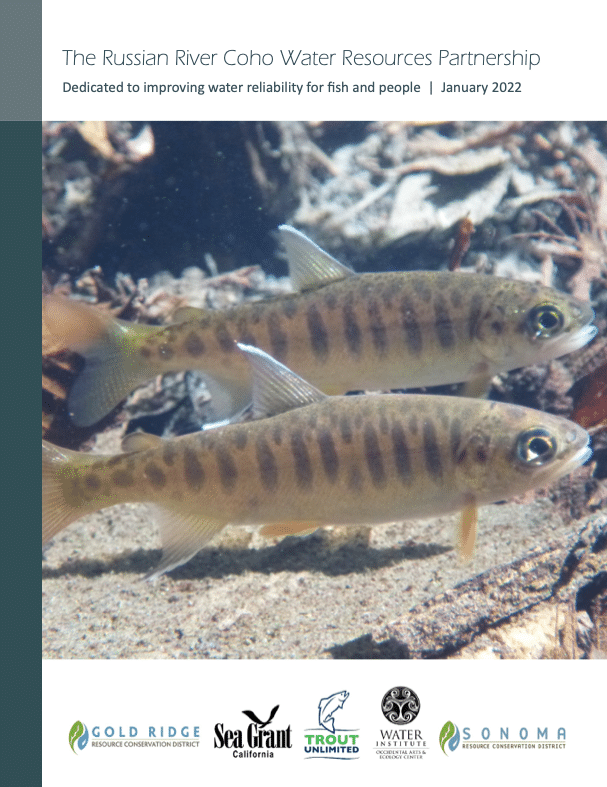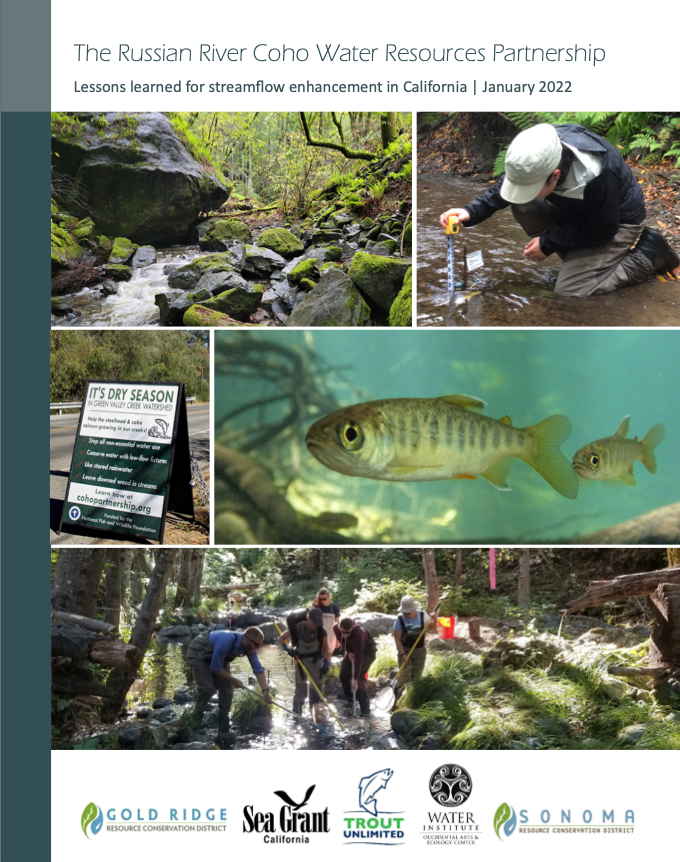photo by Brock Dolman
Salmon are a keystone species, inextricably linked to the health of our coastal ecosystems, yet over the past century their populations have experienced devastating declines. In 2009, when the Russian River Coho Water Resources Partnership (the Coho Partnership) began, only about 20 adult coho had returned to the Russian River to spawn. Today, the Russian River is a success story in West Coast salmon conservation, with hundreds of adult coho returning annually. There is a consensus among experts that comprehensive, multi-stakeholder action helped restore a viable population to the Russian River.
For 10+ years, the National Fish and Wildlife Foundation (NFWF) with support from Sonoma Water funded the creation of the Russian River Coho Water Resources Partnership, a highly coordinated effort between the Gold Ridge and Sonoma Resource Conservation Districts, Sea Grant California, Trout Unlimited, and the Occidental Arts & Ecology Center WATER Institute. Discontinuation of this funding brings this decade long chapter of work and formal collaboration to a close. On Thursday May 12th, a handful of representatives from the Coho Partnership held a final meeting at the OAEC pond to reflect on and celebrate their many successes and to discuss ways to stay connected, forge new funding streams, and imagine next steps for the work to continue in other forms.
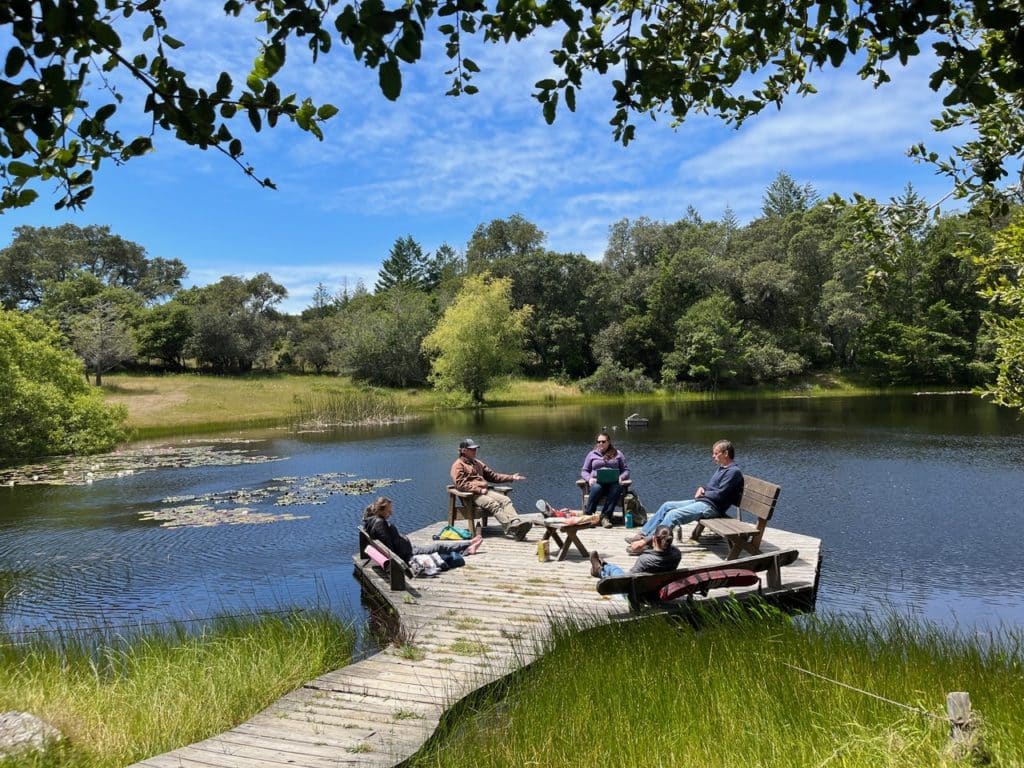
Prior to the formation of the Coho Partnership, rigorous species recovery efforts, including a conservation hatchery program for Russian River coho salmon, had been underway for decades, which prevented coho from extirpation, but the Coho Partnership recognized that endangered salmon and threatened steelhead still faced a formidable bottleneck—insufficient streamflow. Lack of water for fish in streams is a result of over-withdrawal of ground water as well as watershed-scale land use impacts (roads, agriculture, development, legacy logging, fire suppression.) Climate change is compounding the problem, leading to more frequent and severe droughts and an extended dry season, leaving rearing salmonid fry, outmigrating smolts, and adults returning to spawn without enough water to survive.
These challenges, combined with the sociopolitical complexities (as Brock Dolman calls it, “the ego-system”) surrounding human water use, necessitated a multidisciplinary team dedicated to this endeavor. The Coho Partnership members came together, and over the course of 10 years, implemented a variety of strategies to address stream flow issues, including:
- flow and fish monitoring to provide data for cutting-edge scientific models that can predict fish survival based on environmental metrics
- streamflow and habitat enhancement projects such as water conservation and storage, flow augmentations, and upland projects to reduce runoff and increase groundwater recharge in 5 key sub-basins that are critical for salmon spawning and rearing
- scientific studies, publications, and guidance documents like the Dutch Bill Creek Streamflow Improvement Plan
- innovation of interactive tools and field technologies
- professional support and technical assistance to agencies and private landowners
- public outreach and education, including public meetings, outreach to water users, and educational signage throughout the watershed
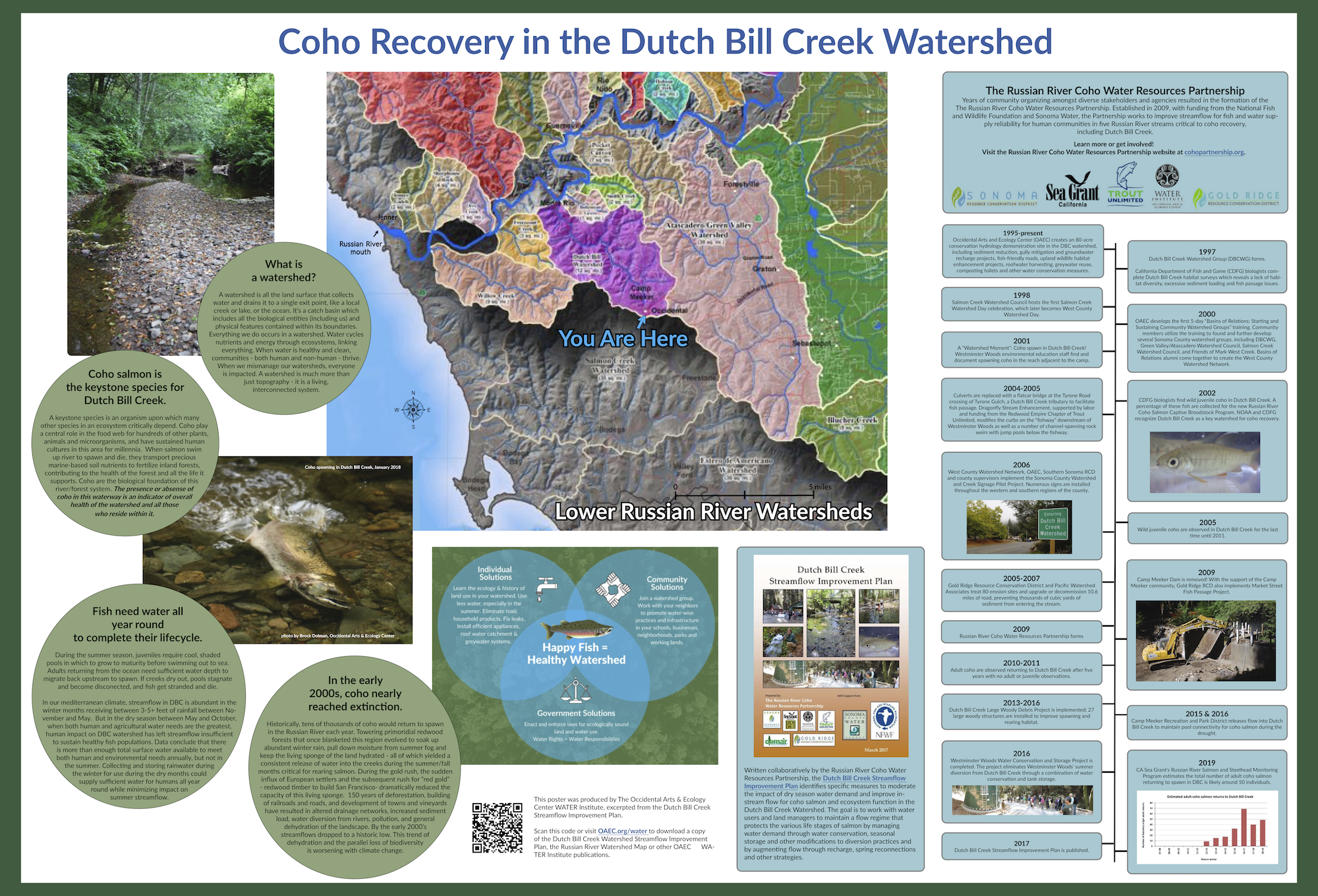
As an educational non-profit focused on eco-literacy and community organizing in the Dutch Bill Creek sub-basin, the OAEC WATER Institute’s particular contribution as a founding member was to bring a systems, community-based approach to the Coho Partnership. In addition to leading on many of the public outreach and education efforts, the WATER Institute often acted as an important networking agent between stakeholders to leverage funding sources, to communicate across agencies and across property boundaries, and to pursue the right course of action on behalf of salmon. Co-founder Brock Dolman reflects, “We always kept our ear to the ground in the community and were able to act as a catalyst, or an enzyme, if you will, in many situations where the ‘egosystem’ needed to get activated.” The WATER Institute’s work with the town of Bodega’s Rainwater Storage project provided an initial model and case study for community organizing around streamflow, upon which the Coho Partnership’s work could build. OAEC was also instrumental in creating the Dutch Bill Creek Streamflow Improvement Plan and associated projects within our very local sub-watershed of Dutch Bill Creek, a critical spawning and rearing stream for coho.
You can read more about the Russian River Coho Water Resources Partnership’s impressive list of projects and accomplishments in these two final report documents:
Over the course of 10 years, NFWF invested more than $6 million through the Russian River Coho Program, which was leveraged by an additional $10.6 million in grantee matching funds. However, the NFWF closed its Russian River Coho Business Plan in 2020, and other funding streams have, sadly, dried up (pun intended). While the formal work of the Coho Partnership has concluded, the Sonoma RCD will continue to host the Coho Partnership website, and the group may continue to meet on a quarterly basis to assess opportunities in a shifting funding landscape for future projects.
Congratulations to the Coho Partnership for your incredible leadership, ingenuity, and dedication to salmon over the past 10 years. May your work inspire other watershed groups across the state, and may the Coho continue to flourish and be plentiful in the Russian River for generations to come!
